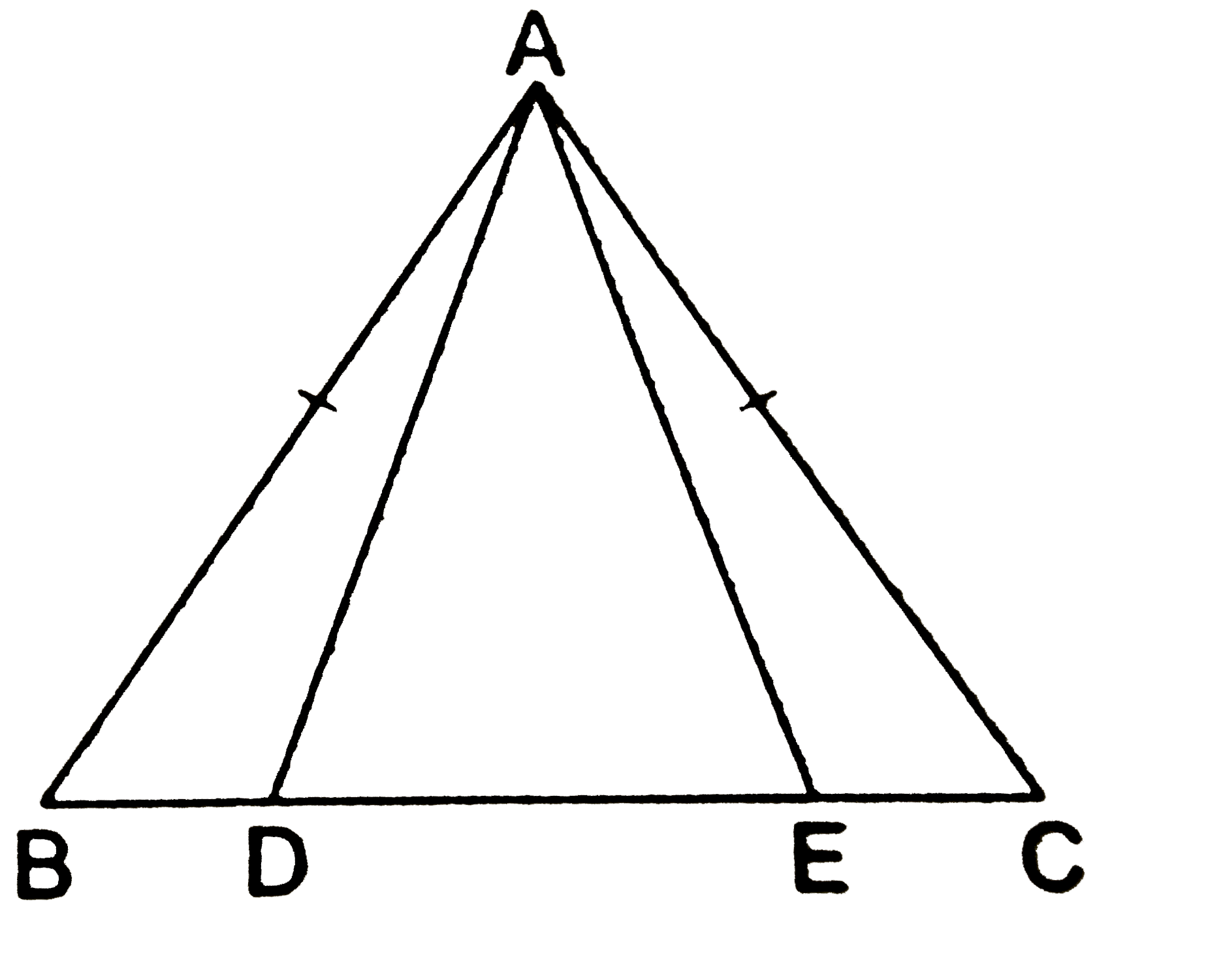In equilateral ΔABC. D is chosen on AC so that AD=13AC, and E is chosen on BC so that CE = 13BC. BD and AE intersect at F. Find the angle ∠CFB?
60∘
45∘
75∘
90∘
To solve the problem, we need to find the angle ∠CFB in the given equilateral triangle ΔABC where points D and E are chosen on sides AC and BC respectively.
1. Understanding the Triangle:
- In an equilateral triangle ΔABC, all sides are equal, and all angles are 60∘.
2. Placing Points D and E:
- Point D is on AC such that AD=13AC. This means DC=23AC.
- Point E is on BC such that CE=13BC. This means BE=23BC.
3. Labeling the Triangle:
- Let AC=a and BC=a (since ABC is equilateral).
- Therefore, AD=13a and DC=23a.
- Similarly, CE=13a and BE=23a.
4. Finding Angles:
- Since ΔABC is equilateral, ∠A=∠B=∠C=60∘.
- The angle ∠ADB can be calculated as follows:
- ∠ADB=∠A−∠ADC=60∘−∠ADC.
- Since D divides AC in the ratio 1:2, we can use the angle bisector theorem or simply recognize that ∠ADC is 40∘ (as derived from the ratios).
5. Using the Angle Sum Property:
- Therefore, ∠ADB=60∘−40∘=20∘.
6. Finding ∠CFB:
- Now, we need to find ∠CFB.
- Since E divides BC in the ratio 1:2 as well, we can similarly find ∠CEB which will also be 40∘.
- Thus, ∠CFB=60∘−40∘=20∘.
7. Final Calculation:
- The angle ∠CFB is therefore 60∘−20∘=40∘.
Conclusion:
The angle ∠CFB is 60∘.
- In an equilateral triangle ΔABC, all sides are equal, and all angles are 60∘.
- Point D is on AC such that AD=13AC. This means DC=23AC.
- Point E is on BC such that CE=13BC. This means BE=23BC.
- Let AC=a and BC=a (since ABC is equilateral).
- Therefore, AD=13a and DC=23a.
- Similarly, CE=13a and BE=23a.
- Since ΔABC is equilateral, ∠A=∠B=∠C=60∘.
- The angle ∠ADB can be calculated as follows:
- ∠ADB=∠A−∠ADC=60∘−∠ADC.
- Since D divides AC in the ratio 1:2, we can use the angle bisector theorem or simply recognize that ∠ADC is 40∘ (as derived from the ratios).
- Therefore, ∠ADB=60∘−40∘=20∘.
- Now, we need to find ∠CFB.
- Since E divides BC in the ratio 1:2 as well, we can similarly find ∠CEB which will also be 40∘.
- Thus, ∠CFB=60∘−40∘=20∘.
- The angle ∠CFB is therefore 60∘−20∘=40∘.
The angle ∠CFB is 60∘.
Topper's Solved these Questions
Similar Questions
Knowledge Check
D is the midpoint of BC of △ABC. Point E lies on AC such that CE=13AC. BE and AD intersect at G. What is AGGD ?
D त्रिभुज ABC का मध्य बिंदु है | बिंदु E, AC पर इस प्रकार स्थित है कि CE=13AC है| BE और AD एक-दूसरे को 9 पर प्रतिच्छेद करते हैं। AGGD क्या है?A3:1B4:1C5:2D8:3In ΔABC,DE∣∣BCsuch that ADBD=35. If AC=5.6cm, then AE is equal to
A4.2 cm.B3.1 cm.C2.8 cm.D2.1 cm.
In a ΔABC,AB=AC,D is a point on BC such that ∠BAD=50∘ and a point E on side AC such that AE = AD find ∠CDE.
View SolutionIn ΔABC,D is point on side AB and E is a point on side AC such that ∠ADE=∠ABC,AD=2,BD=3 and AE=3, then what is the value of CE ?
View SolutionIn ΔABC,AB=AC and D is a point in BC so that BD=CD. Prove that AD bisects ∠BAC.
View SolutionIn a ΔABC,AB=AC,D is a point BC such that ∠BAD=50∘ and a point E on side AC such that AE =AD find ∠CDE
View SolutionIn a ΔABC, if DE is parallel to BC, ADDB=34 and AC = 15 cm, then find the length AE.
View SolutionIn a ΔABC,BD is the median to the side Ac, BD is produced to E such that BD = DE. Prove that AE is parallel to BC.
View Solution

